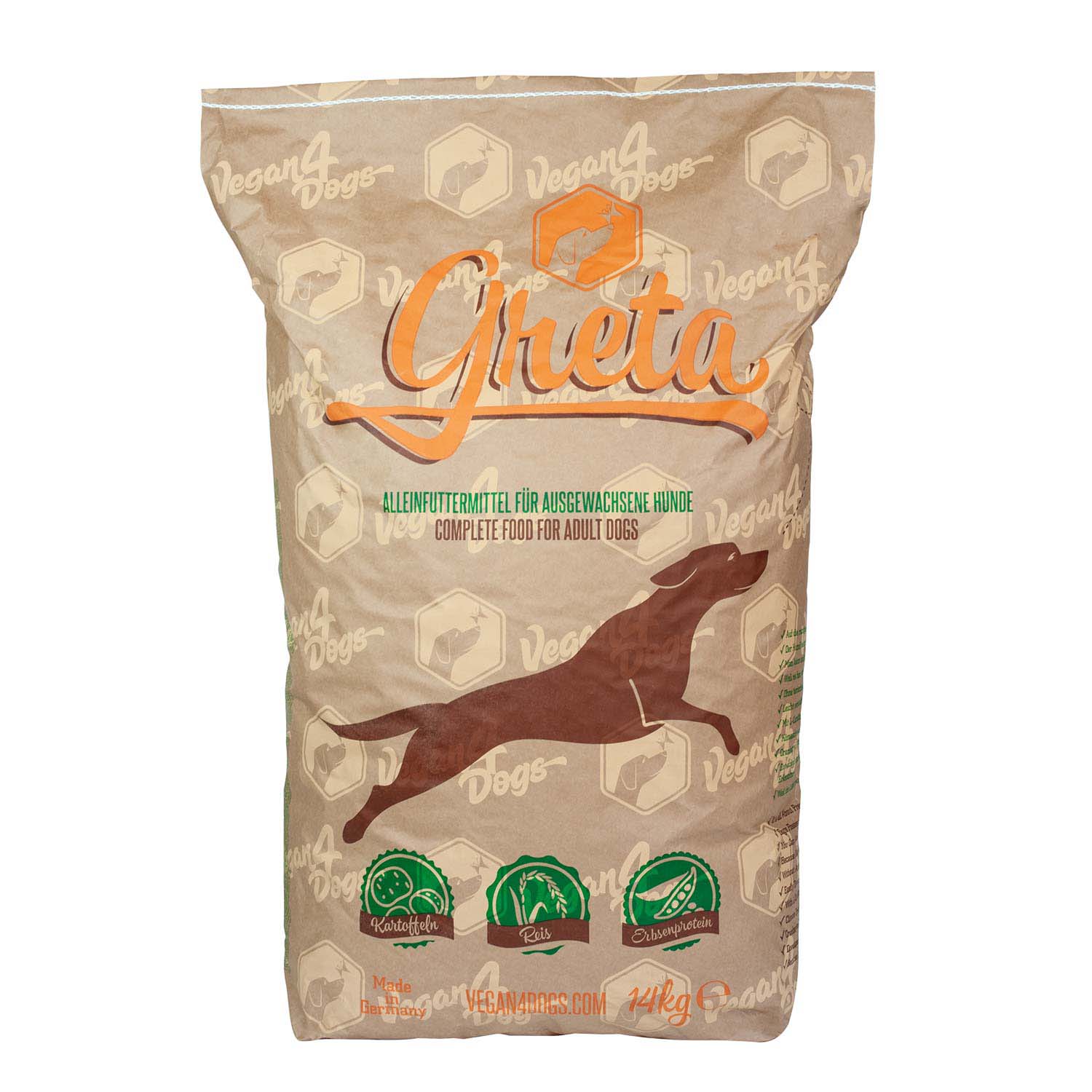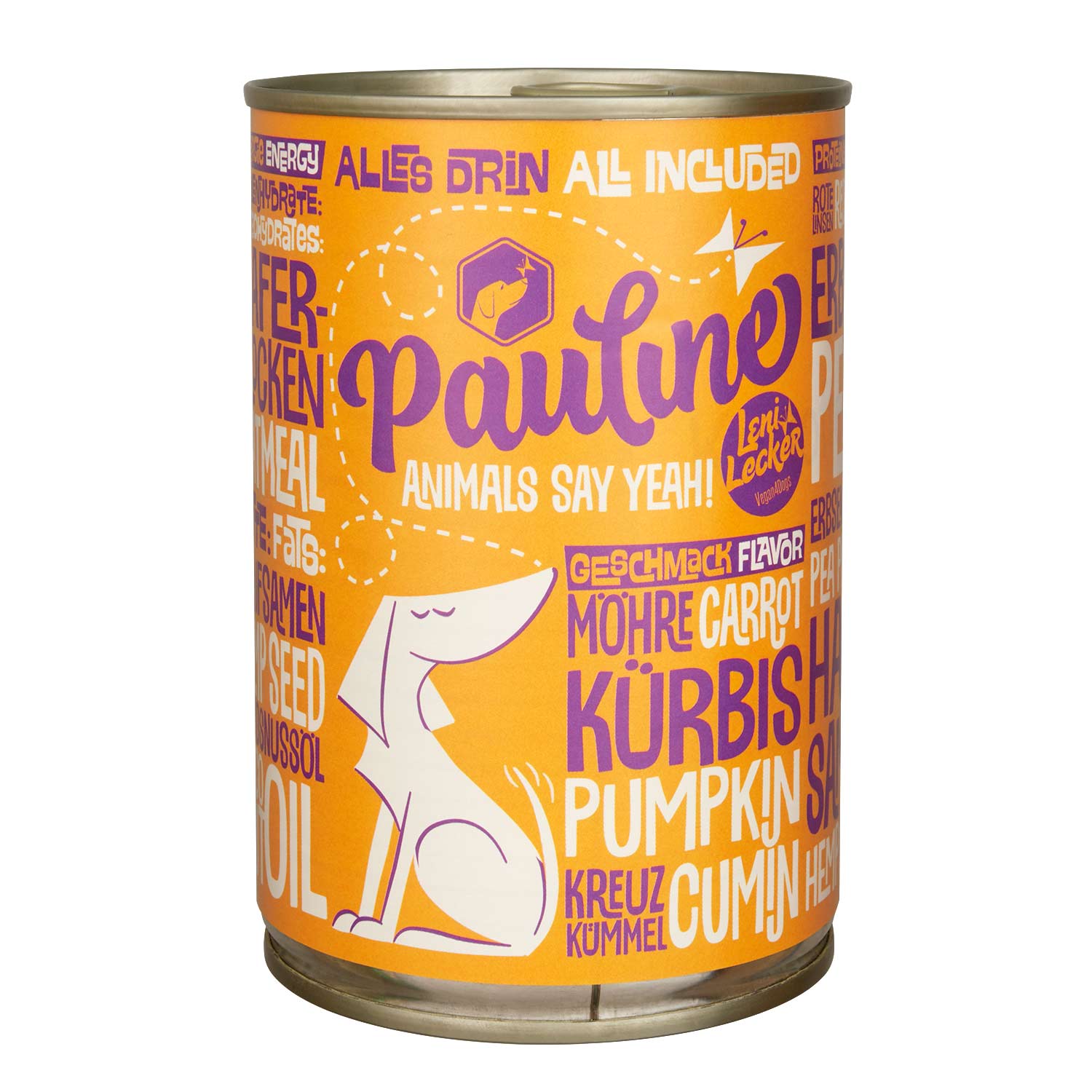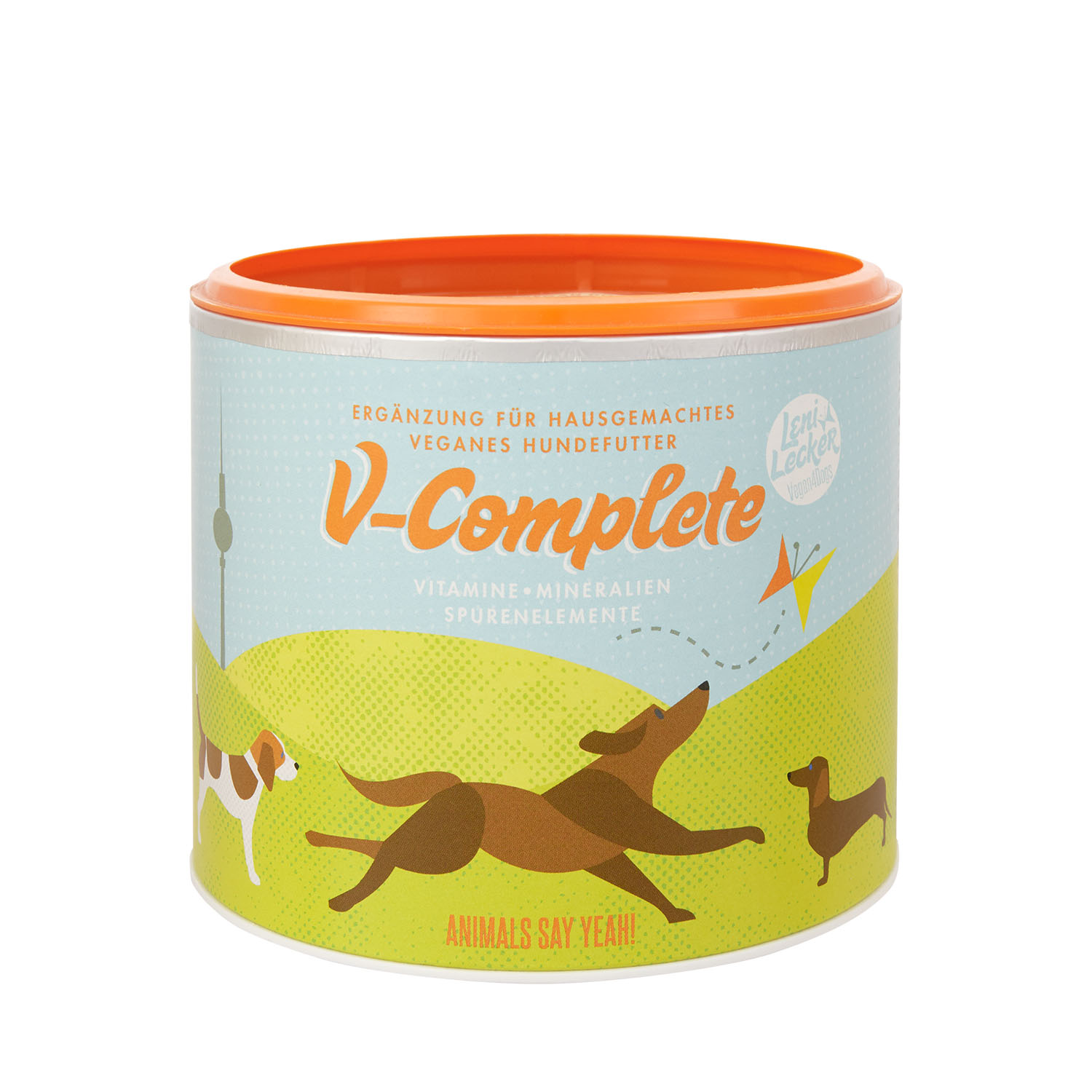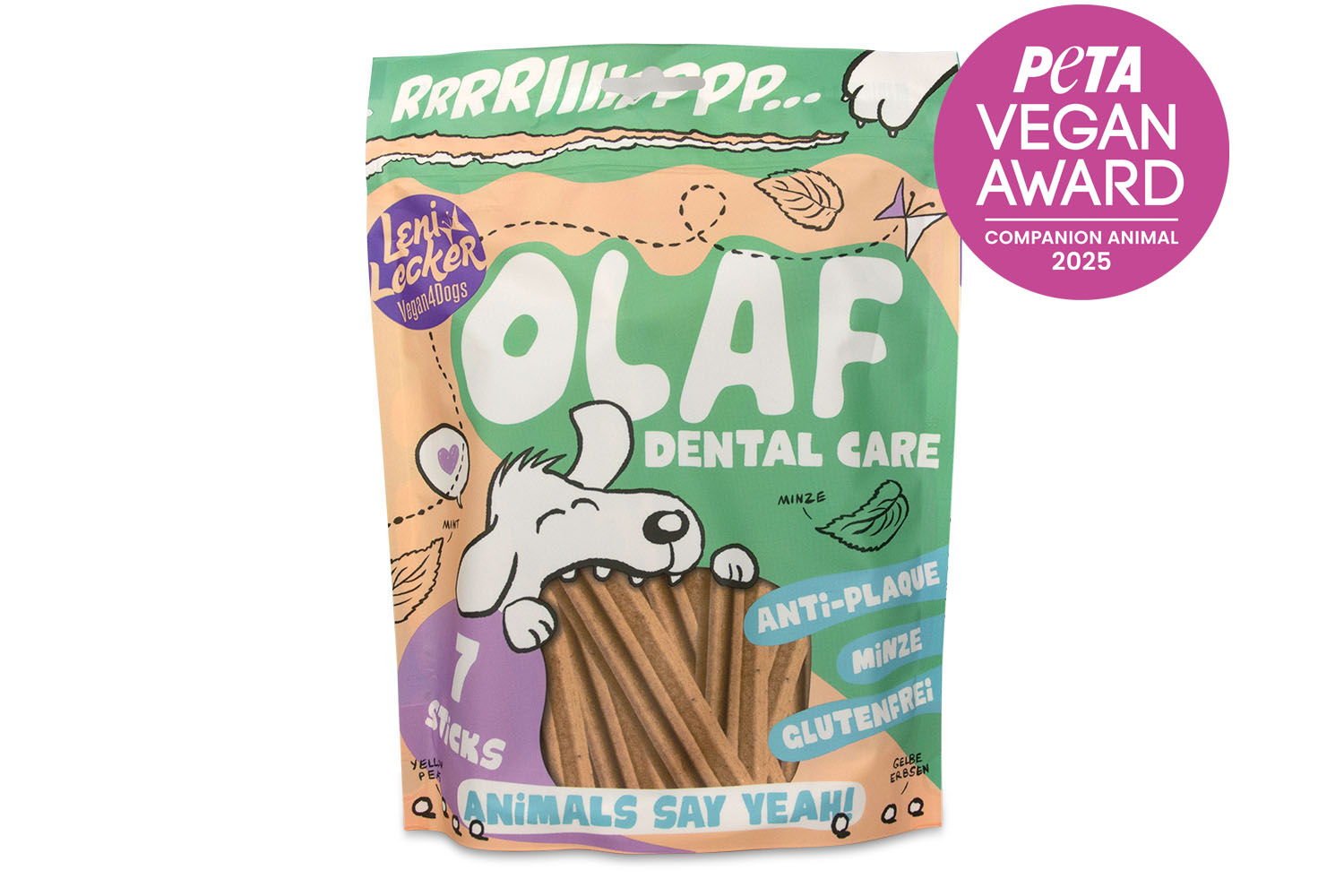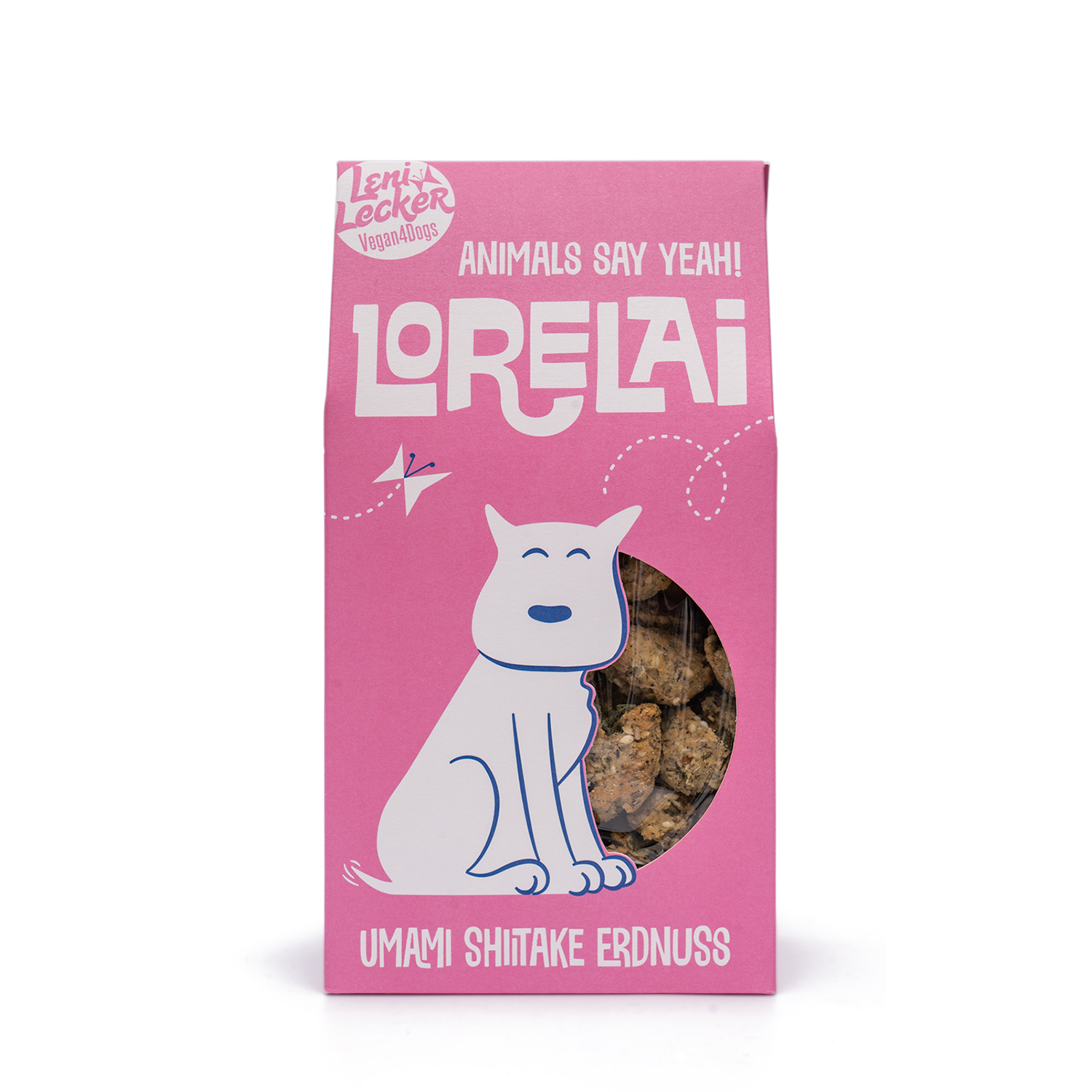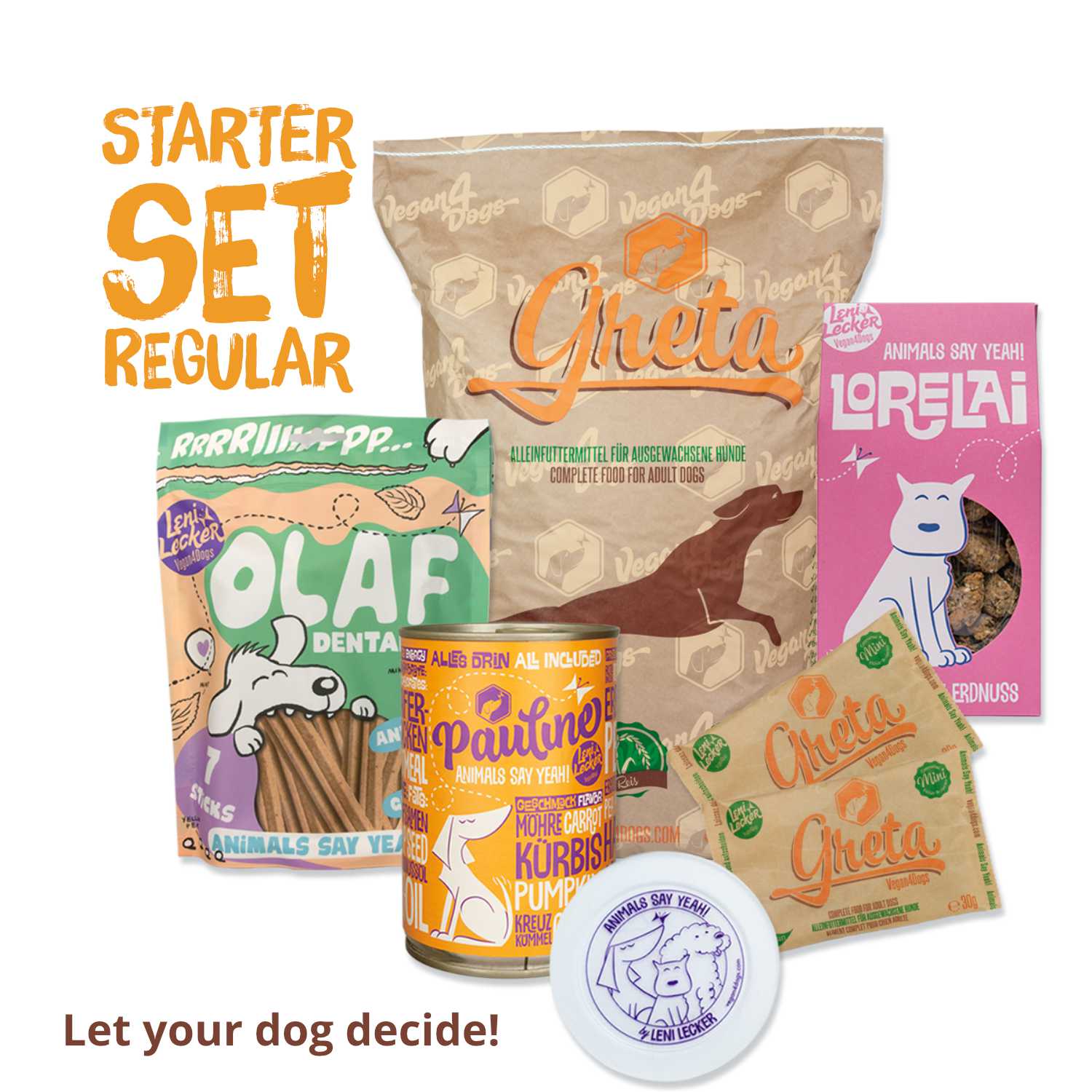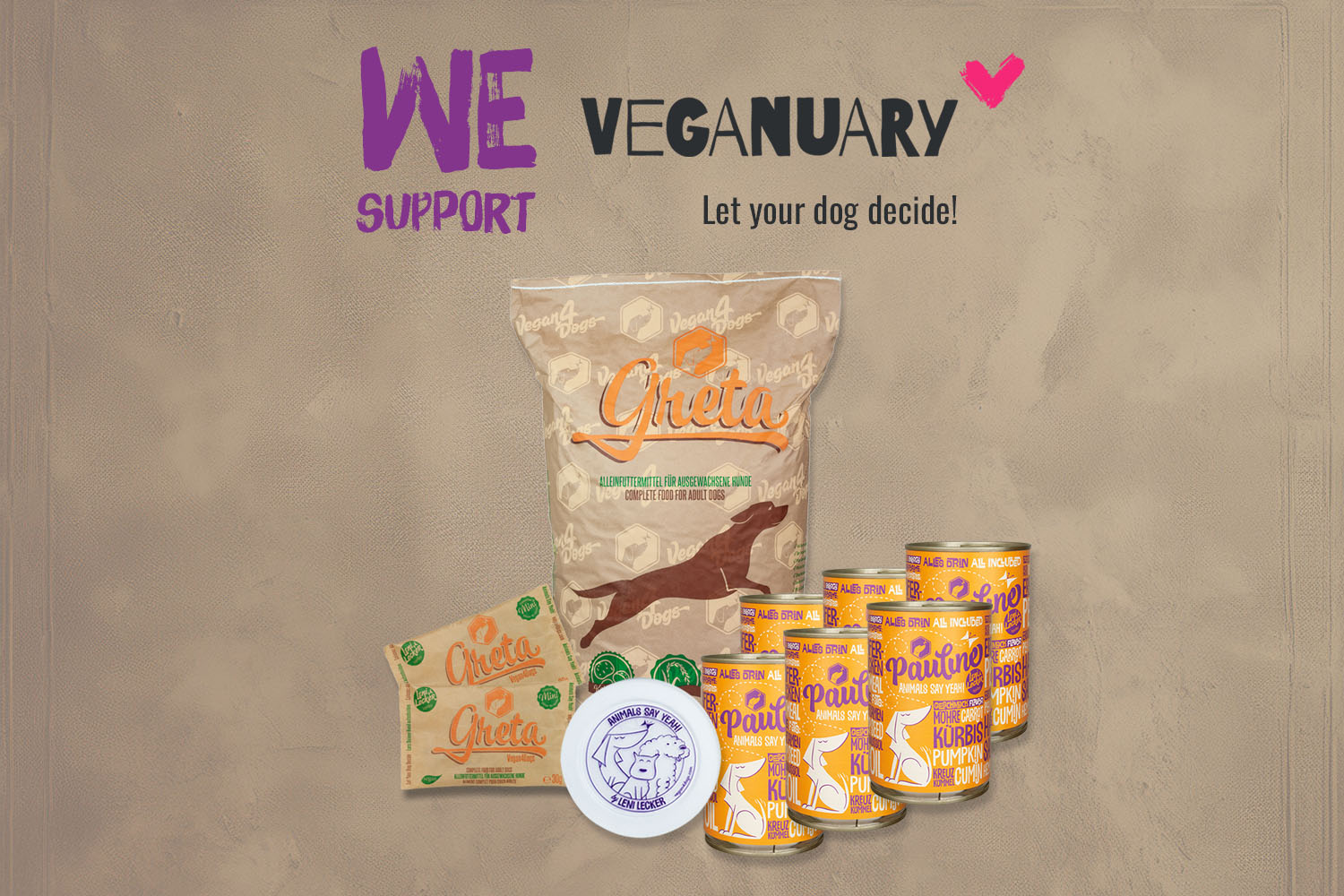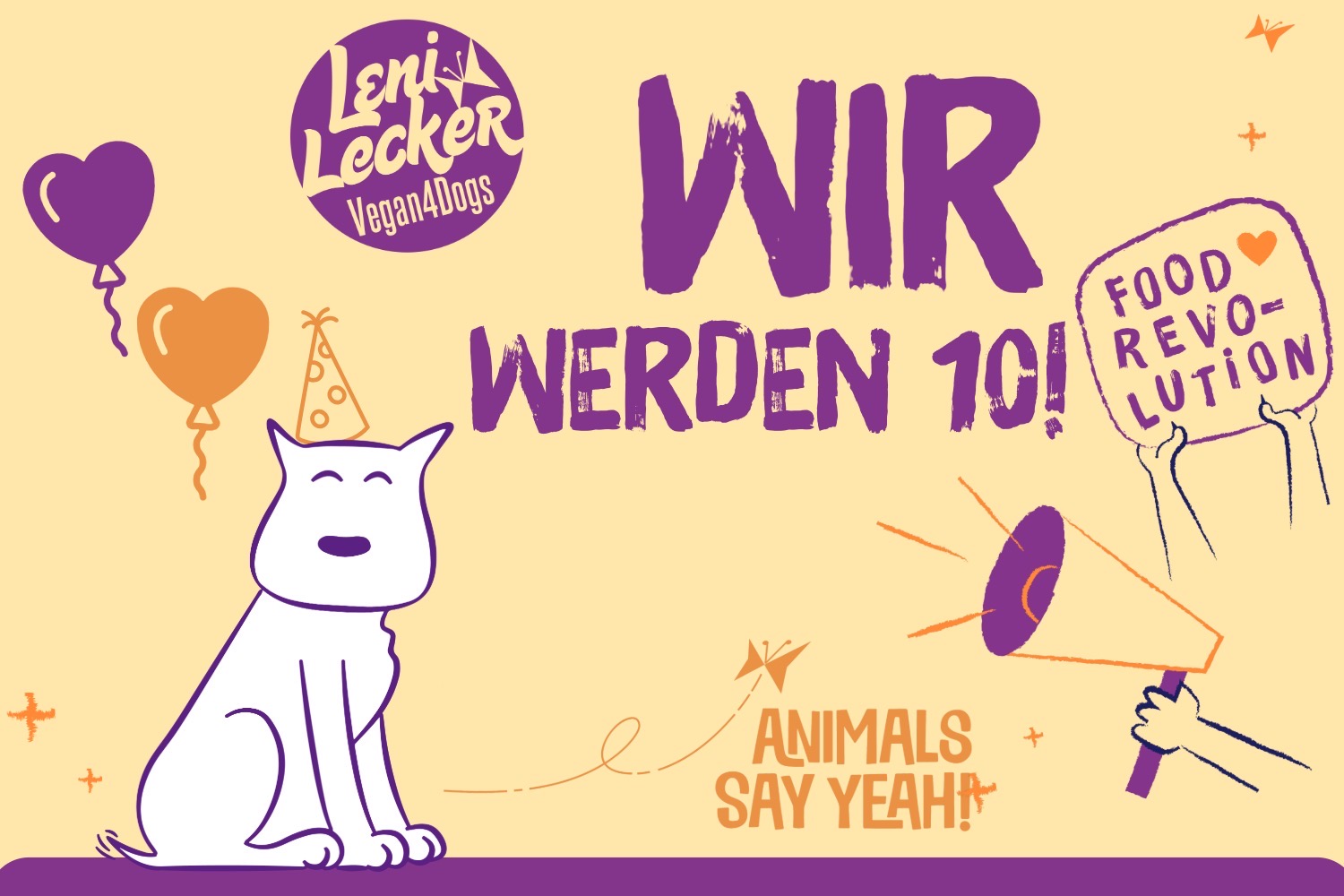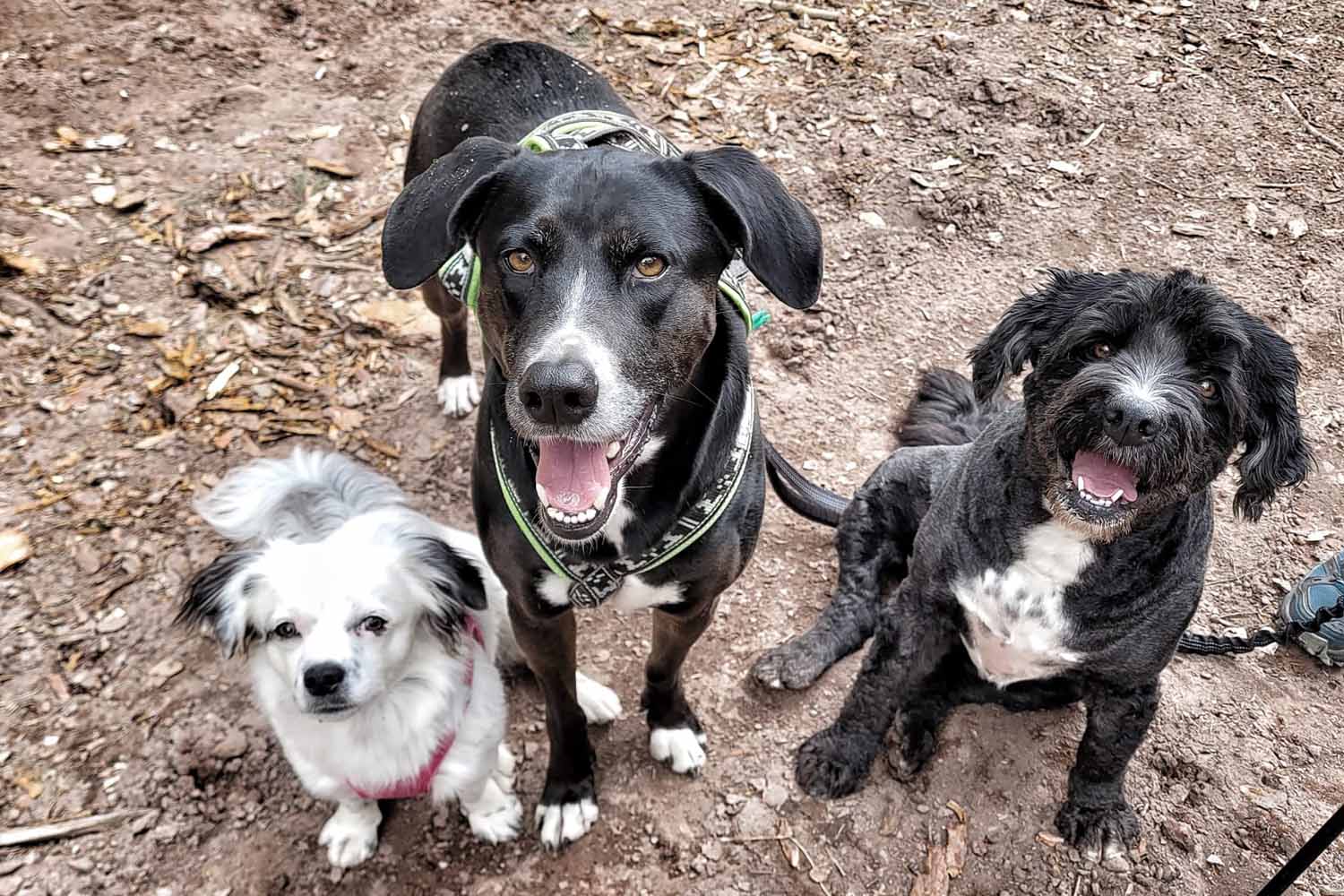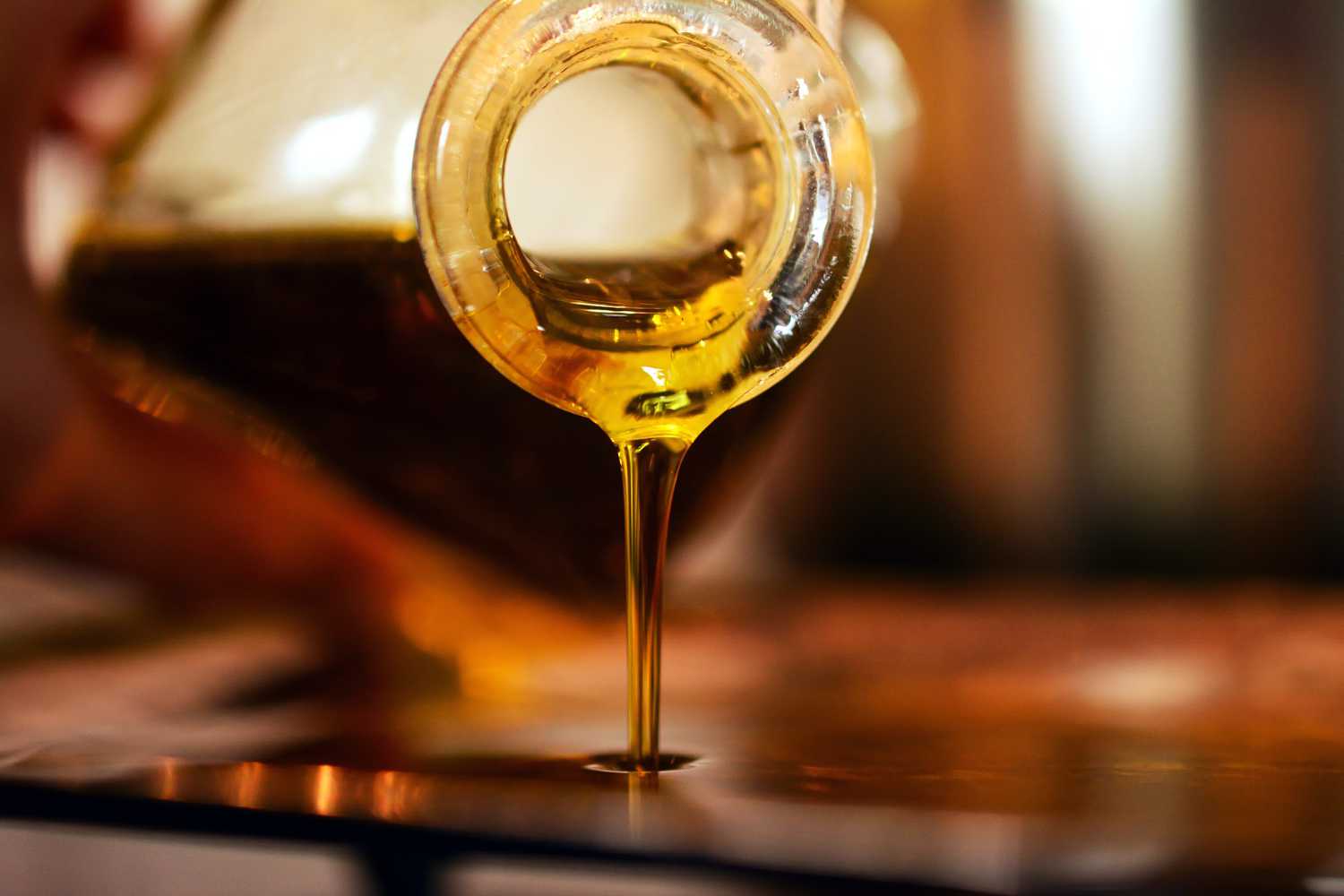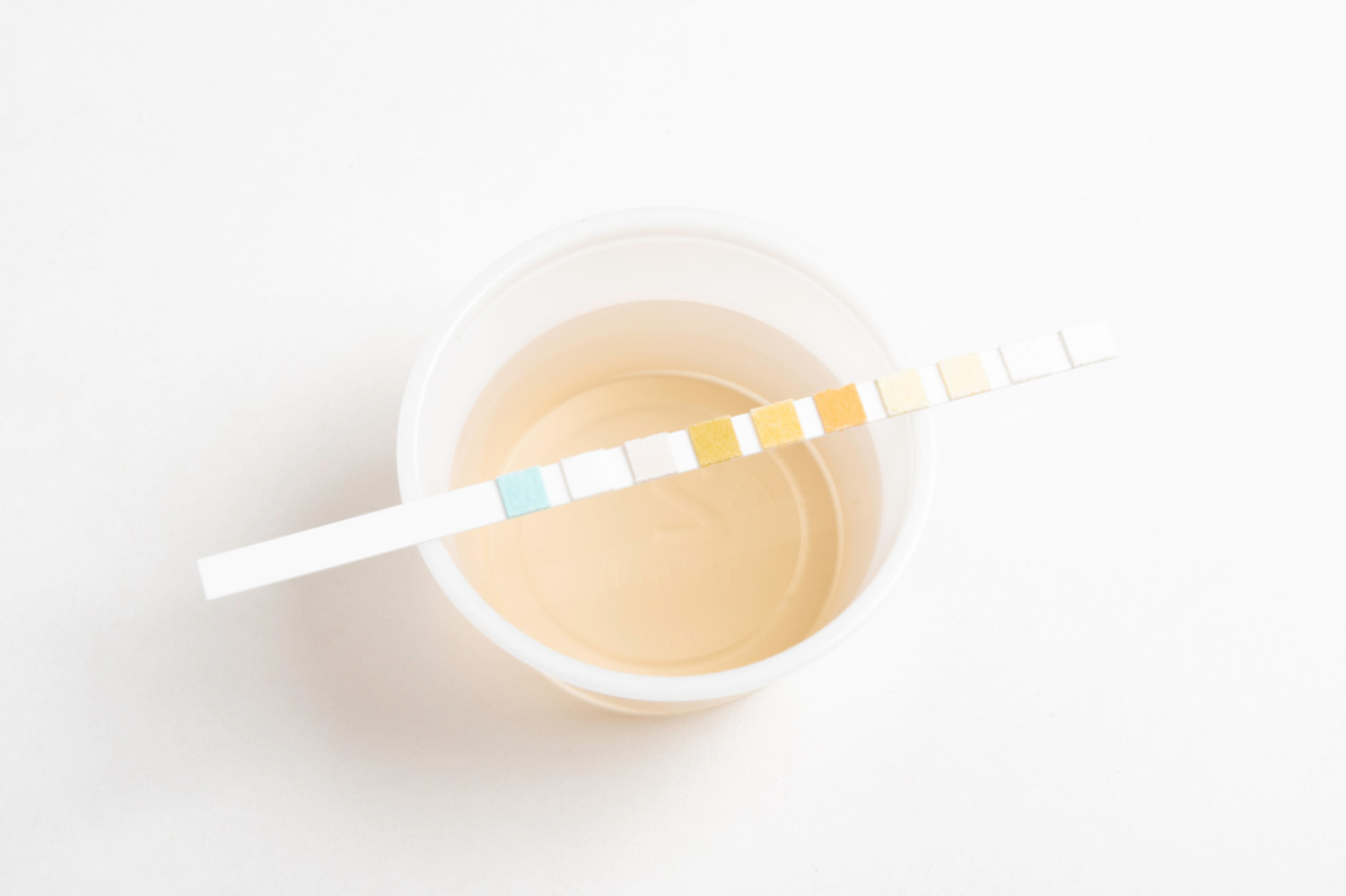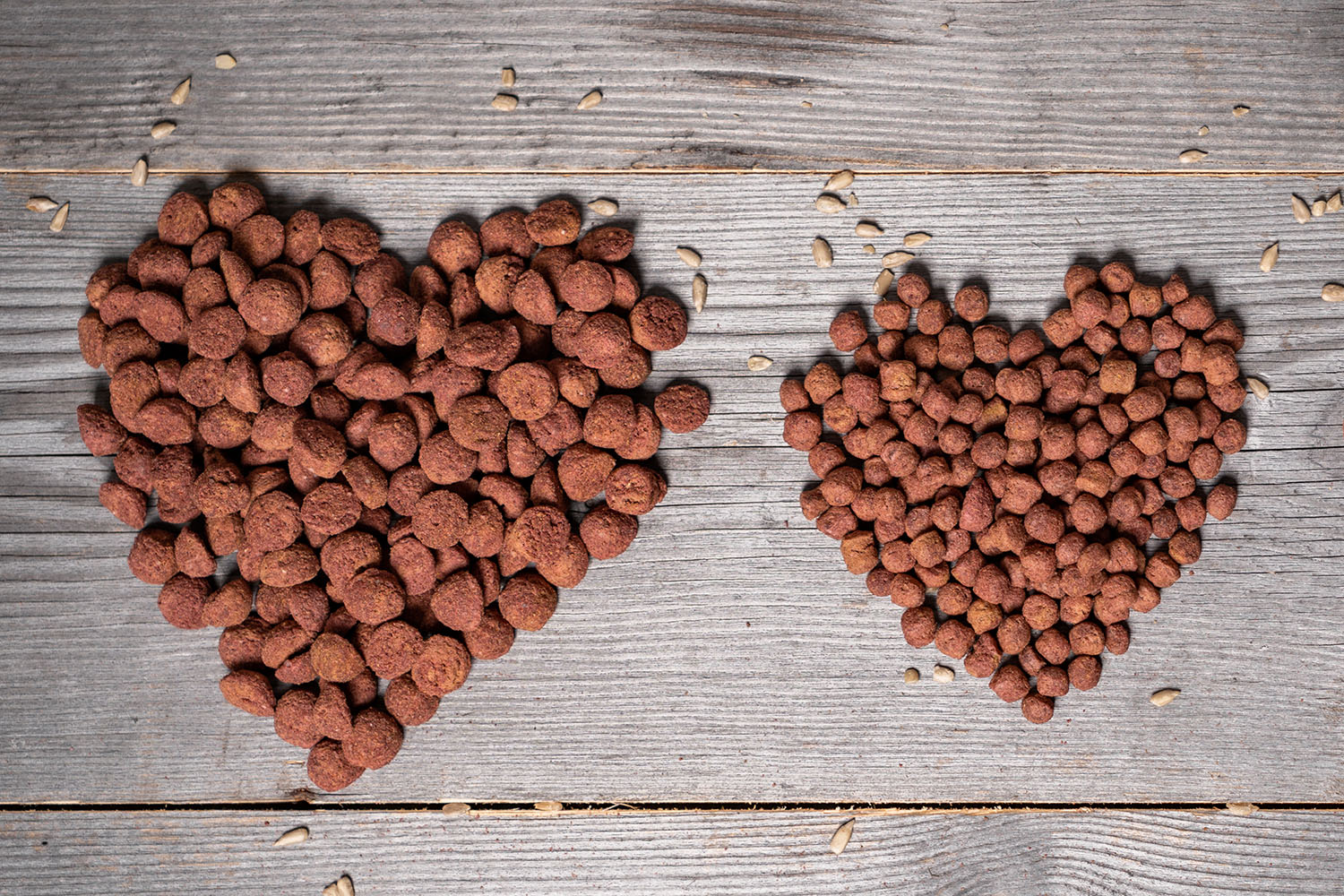
Changing your dog's Food
Changing your dog's diet or providing the right food can raise a few questions for many keepers at first. But don't worry! Food changes are completely normal in a dog's life. Imagine having to eat the same food every day - that would be boring, wouldn't it?
Your dog can feel the same way. Variety makes food more exciting and healthier for him. If we do things properly and the food is well tolerated, we also ensure a healthy intestinal flora and can help to further develop and strengthen the microbiome (community of different microorganisms in the intestine). Because, as with us humans, healthy intestinal flora and digestion ensure a better feeling of well-being1.
In the following post, we introduce you to the various reasons for changing your dog's diet and give you step-by-step instructions on how to go about it.
Table of contents
Reasons for Changing the Dog Food
Dog Feeding Basics
How much Food Does a Dog Need?
How does the Transition to a New Dog Food work?
Which Dog Food is the Right One?
What is happening in the dog's gut while transitioning to a new diet?
Possible effects due to the diet change
Worries and Fears When Switching Dog Food
Conclusion
Sources
Change in Age Level
Like us humans, your dog will go through different age stages in the course of his or her life, which involve different nutritional requirements. When should you switch from puppy food to adult food and when is it time for senior food?
As a rough guide: puppy food is usually served until around 12 months of age or until the end of the growth phase, which can extend to 18 months of age for larger dog breeds. Senior food can be useful from the age of seven, but is not absolutely necessary.
You are wondering which nutritional values are particularly important in puppyhood and whether a vegan diet is possible for puppies? We have summarised all the answers to these questions in one of our previous blog posts. Check out our blog post on vegan puppy nutrition here.
Changing the Type of Food
Switch from Kibble to Canned Food and vice versa
Sometimes practical reasons are the reason for a change of food, for example if you are travelling a lot and don't have a fridge available or your dog companion is being cared for by another person and you want to make it as easy as possible for them. Then kibble is a very good option.
Canned food, on the other hand, can be tastier for dogs, is easier to chew and offers more moisture, which can be important if your dog doesn't drink much, for example. If your dog has dental problems, it may be useful to switch from harder dry food to soft wet food so that your dog can eat the food more easily.
So every dog has their own preferences, some just like to chew kibble, while others prefer to simply gobble it up. As the food is usually not chewed and enters the stomach in very large chunks, it can take some time to be fully digested and can cause digestive problems such as hyperacidity and flatulence. A good way to reduce gobbling and introduce a bit of variety into feeding can be the use of a gobbling bowl, food ball, lick mat or a sniffing carpet. Some time ago, Leni had a guest dog called Lola visiting her and Leni kept throwing the food to her in the office. You can have a good insight into how individual the food intake and the needs of dogs are in our blog post ‘Slobbering, licking or gobbling’.
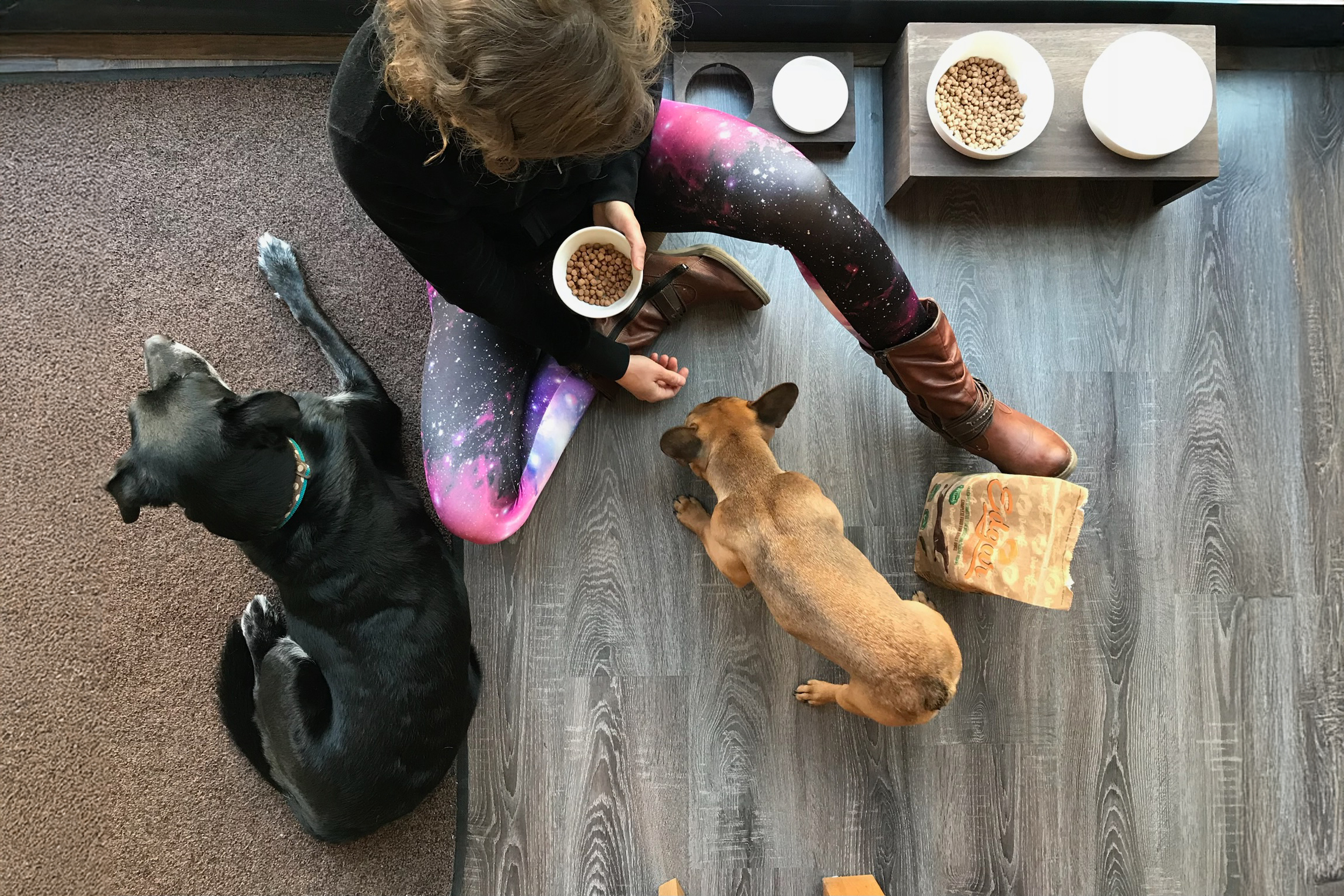
Switch from Conventional Food (incl. barf) to Vegan Food
More and more human companions are opting for a vegan diet for their four-legged friends for ethical reasons, due to illness or intolerances, as well as allergies to animal proteins. But that's not all, feeding a dog a varied and vegan diet has many more advantages.
Horse, ostrich, kangaroo, crocodile, insects... have you tried them all? The choice of alternative animal protein sources has exploded in recent years. From conversations with human companions we know and friends, we are in constant dialogue about which exotic animal is currently being tested. The solution is usually very simple. Instead of testing different animal proteins, we like to recommend using a plant-based alternative.
In our minds it is still strongly anchored that dogs are descended from wolves and are therefore unable to digest plant-based foods, although there are now studies2, that prove that dogs have adapted evolutionarily, Günther Bloch also describes this in his book Pizzahunde.
Feeding a dog a vegan diet can also mean feeding your dog a more varied and diverse diet, which means that we have all the more opportunity to offer our companion seasonal and regional food, which saves a lot of CO2 compared to the meat industry and at the same time can be easy on our wallets.
A recent study3 shows that greenhouse gas emissions from the production of animal-derived foods are almost twice as high as those of plant-based foods. The CO2 emissions of an ‘average’ dog, with a life span of 13 years, correspond to around 13 round-trip flights from Berlin to Barcelona, with food being the largest component.
Switching from Complete Food to Home-cooked FoodHome-cooked dog food can be a great way to adjust your dog's diet individually and increase the compatibility of the food. However, it can also be a little overwhelming when you are suddenly solely responsible for your companion's diet. The thought of doing something wrong can be a big one, but with us you don't need to worry.
We have put together some great recipes for you on our website which, in combination with our V-Complete supplement, form a complete diet
Dog Food is no longer available
Sometimes the food you are used to is suddenly no longer available in the shops or the recipe has changed. A switch is unfortunately unavoidable, but don't worry - with a little patience you can find a suitable alternative. It can be useful to try different dog foods in smaller packaging sizes, such as our Greta Minis.
Switch to a Higher Quality Dog Food
Maybe you, like some of our Vegan4Dogs community, have adopted your dog from an animal shelter and are offering them a lovely forever home. As we know, helpers and dogs in animal shelters are grateful for every donation and different types of food are usually served. Maybe you would now like to do something good for your dog and switch to a higher quality and more sustainable food.
Special Diet
If your dog is overweight or underweight, the food ration needs to be adjusted to achieve the ideal weight. You can recognise whether your dog is at the ideal weight by the fact that their ribs are easy to feel without them protruding visibly. In dogs with short fur, an hourglass figure can be spotted from a bird's eye view.
Health problems such as liver and kidney disease often require a special diet in which certain nutrients should be avoided. This can also be a reason to change your dog's diet or food. In such cases, it is best to seek support from a nutritional expert.
Diseases & Intolerances
Some dogs are affected by allergies or intolerances, e.g. to animal protein. Some plant-based ingredients such as wheat, rice, corn, soya, peas or potatoes can also be potential allergens. An elimination diet can provide clarity here and also reveal unusual allergens.
An adapted diet can help and significantly improve your dog's well-being.
How much Food Does a Dog Need?
The amount depends on age, size and activity level. A good guideline is the recommended feeding amount from the manufacturer, which you can adjust after some time by checking the ideal weight. For our vegan kibble Greta, we recommend 1.4% of body weight per day, which would be 210g for a 15kg dog. For our wet food Pauline, the feeding recommendation is 600g for a 15kg dog. As the moisture level of dry food is considerably lower than that of canned food, the nutrient density is correspondingly higher with a lower mass.
You can find our general feeding recommendation for home-cooked dog food with V-Complete here.
Don't forget: there should always be enough fresh water available.
Feeding Times
Regular feeding times and regular intervals create a good routine that allows the stomach to adjust to the refill. The time of day is not always essential, routines such as after a walk can also provide good orientation.
Stomach Twisting
To avoid stomach twisting, you should give your dog a rest period after feeding and avoid playing or going for a walk for the next two hours. However, it has not yet been clearly proven whether this can really trigger a stomach torsion.
Bowl Hygiene
Bowl hygiene is often underestimated, clean the bowl regularly, especially after fresh or wet meals. We also don't like to eat from used plates.
How does the Transition to a New Dog Food work?
There is no one-size-fits-all approach to switching food. Every dog is individual and has their own needs. Some dogs don't mind a change of food, other dogs react more sensitively to a switch. You know your dog best and can evaluate the situation through observation. We have put together some tips and tricks in the following section.
For sensitive dogs, it is a good idea to introduce the change in food gradually so as not to overtax your dog's digestive tract. Observe your dog carefully and also pay attention to external circumstances (change in weather, stress or other changes), because every dog reacts differently and it is not always the food that triggers.
Switching from Dry to Wet Food
Ideally, you don't serve canned food straight from the fridge but leave it to stand for a while so that it warms up to room temperature, as cold food can irritate your dog's stomach.
When switching, add a slightly higher amount of wet food to the dry food every day. Our suggestion of how a transition could look like:
Day 1-3: Mix 2/3 Kibble and 1/3 Canned Food
Day 4-6: Mix 1/3 Kibble and 2/3 Canned Food
from Day 7: Serve Canned Food
It is also possible that you have a dog that can make the change from one food to the next without any problems and immediately tolerates the new food.
Change from Wet to Dry Food
Our suggestion how a switch could look like:
Day 1-3: Mix 1/3 Kibble and 2/3 Canned Food
Day 4-6: Mix 2/3 Kibble and 1/3 Canned Food
From Day 7: Serve Kibble
As wet food has a high water concentration, it can make sense to soak the dry food in a little water beforehand, but the kibble should still be on the ground. Use cold or lukewarm water for this, not hot water, so that the heat-sensitive vitamins are also well preserved. Some dogs also like it when they can snatch the dry kibble, like muesli, out of the water.
However, there are also dogs that snack on dry food without adding water when switching from wet to dry.
As dry food absorbs a lot of liquid during digestion, you should always provide fresh water. The amount of water your dog consumes with dry food is much higher than with wet food.
Switching from Meat-based Food (e.g. barf) to Vegan Food
As we already know, dogs are no longer strictly carnivores but omnivores. Through centuries of cohabiting with humans, the dog's organism has changed and is now able to digest starch3. Many dogs can be fed a vegan diet, depending on the region, breed and external circumstances.
Every step towards a vegan diet is an important step for our environment and the welfare of other so-called farm animals. If you are not 100% confident, it is also possible to start with vegan snacks such as Lorelai or Olaf.
You can also read more in our section The Vegan Dog.
Switching from meat-rich to vegan can work very quickly, but it doesn't have to, because more stomach acid is used in the dog's stomach to digest animal protein than for the digestion of plant proteins. This can lead to an excess of stomach acid in the first few weeks until the production of stomach acid has regulated. The intestinal bacteria also have to adapt when switching to vegan food. The changeover can therefore take weeks or even months in some cases. For some dogs, the switch works immediately. You can find tips on how to regulate stomach acidity below in the section on the possible effects of switching food.
Our suggestion on how a switch could look like:
Week 1-2: Mix 3/4 Meat-based food and 1/4 vegan Food
Week 3-4: Mix 1/2 Meat-based food and 1/2 vegan Food
Week 5-6: Mix 1/4 Meat-based food and 3/4 vegan Food
From Week 7: Serve vegan Food
However, you may also have a dog that can easily switch to vegan food from one day to the next.
Switching within the Food Type
This refers to switching to a different kibble or moist food. As the consistency remains the same and the ingredients may vary, the change should be made gradually. When switching from dry food, for example, dogs may select the new or old food depending on which food they like better.
Our suggestion as to what a switch could look like:
Day 1-3: mix 2/3 Previous Food and 1/3 New Food
Day 4-6: mix 1/3 Previous Food and 2/3 New Food
From Day 7: Serve New Food
Switch from Ready-made Food to Home-Made Food
Home-made dog food can be a great option to personalise your dog's diet and meet their tastes. Does your dog love broccoli? Then it's best to cook a recipe with broccoli. Your dog doesn't like carrots? Then look for a recipe without carrots. Due to the gentle processing, cooked food is considered to be best tolerated and is also particularly recommended for exclusion diets and stomach problems.
A change is usually very well accepted, but the stomach still has to get used to the new food. Sometimes you first have to find a suitable recipe that your dog likes.
Don't know what to cook? Get some inspiration from our recipes.
Our suggestion of what a switch might look like:
Day 1-3: 2/3 Ready-made Food and 1/3 Home-Made Food
Day 3-6: 1/3 Ready-made Food and 2/3 Home-Made Food
From Day 7: Serve Home-Made Food
Which Dog Food is the Right One?
To summarise, there is no right or wrong, no matter which option you choose, it has to suit your circumstances and your dog's needs and above all: taste good! A combination of all three types of food, dry, wet and home-made, is a great option and keeps the food from getting boring. This is what Leni does with Eddie, for example. The different types of food are usually served at different mealtimes.
What is happening in the dog's gut while transitioning to a new diet?
As already mentioned, your dog's gut adapts to the new food while switching food. Microorganisms and stomach acid are key factors here.
More stomach acid is needed to digest animal proteins than plant proteins, for example. We often hear people who have no experience with vegan dog nutrition claim that plant-based protein sources such as pulses lead to increased flatulence. Although this may be possible in individual cases, we and the majority of our Vegan4Dogs community experienced that the exact opposite is the case and that flatulence is reduced.
We have used digestive herbs and spices such as cumin, savoury and ginger in both our recipes and our products to help digest vegan proteins more easily.
To help your dog's digestive system and microbiome get used to the new diet, it can be useful to introduce the new food gradually.
Diarrhoea & Poo Consistency
When switching to vegan food, it is common for the volume of faeces to increase and the consistency to become somewhat softer, as the plant-based food has a higher content of fibre. This can also be beneficial for some dogs if they find it difficult to defecate due to constipation.
The colour of the stool can vary depending on the ingredients in the food. For example, if you feed a lot of spinach, the poo will be greener or, as with our kibble Greta, which contains beetroot, the urine and poo may turn a slightly reddish colour. Our wet food Pauline contains mainly ‘light’ ingredients, which gives your dog's faeces a lighter colour.
When changing food, temporary diarrhoea may also occur. This should not be a cause for concern. However, if the diarrhoea persists for several days, check with your vet or adjust the change of food.
Vomiting
Especially when switching food from animal proteins to plant-based or from wet to dry food, excess stomach acid can be produced, especially overnight. Vomiting stomach acid in the morning or eating more grass can be possible symptoms of too much stomach acid.
It can help to offer a small snack late in the evening before going to bed, e.g. a dry crust of bread, or to mix some healing clay into the food to initially bind or regulate the stomach acid.
Flatulence / Stomach Ache
Flatulence can also occur during the transition. If your dog has stomach pain or feels unwell, you should reduce the new food again slightly. Digestion-promoting spices or vegetables such as fennel can be added to the food to give your dog relief.
Skin Disorders / Itching
In rare cases, skin reactions may occur. Observe whether your dog scratches more often and adjust the diet accordingly. Food is not always the cause of a skin reaction. Other environmental influences, such as stress or seasonal triggers, can also lead to a skin irritation.
Rejection of the New Food
Some dogs are picky and need some time to get used to the new food. Patience and various feeding tricks, such as making the new food palatable, can help here. For example, you can spice up the food with nutritional yeast or mix in finely chopped veggie sausage. Check out the recipe for Leni Lecker vegan dog sausage here. The addition of vegan yoghurt, coconut oil or coconut flakes can also make the food more appealing.
Scattering kibble in a sniffer rug or offering it in a food ball, hiding the food bowl in the flat and letting your dog search for it or spreading wet food on a licking mat and letting your dog lick it off are great ideas to make the food more interesting for your dog.
Having a second dog over to eat his vegan food with pleasure can also be a stimulus for your dog 😉.
Nutrient Deficiency
Worrying about nutrient deficiencies can be a big concern, because it would be too easy if your dog could tell you what he needs. If you choose a complete food, then the chances are that you are doing something right, but not all complete foods fulfil the requirements, as you can often find out by reading reviews.
If you decide to prepare meals for your pooch, we recommend switching the ingredients regularly and supplementing the menu with our V-Complete. You can find a variety of dog food recipes on our recipe blog.
Duration of the Transition
A switch of food can be uncomplicated and quick. Sometimes it doesn't work out the first time. This is no reason to lose heart. From my own experience, I can tell you that it can sometimes take months or even years to find the right diet for your dog. If you get stuck at some point, we recommend that you contact a vegan nutritionist for dogs. They benefit from many years of experience and can help you find the right path.
Conclusion
Now that you are well informed about switching your dog's food, you can get started - yay! Approach the transition to new dog food with curiosity and fun, because a positive attitude can also make a big difference. Get to know your dog and his preferences even better and go on an exploration trip together. Food should be fun and taste good - for you and your dog!
Do you have any questions? Leave us a comment so we can help each other and exchange ideas.
Also check out our shop or our recipe blog. You're sure to find something exciting here.
Disclaimer
This article is for information purposes only and does not replace a veterinary consultation. In the case of health issues or problems, we recommend that you seek advice from a vet who can better assess your individual situation and consider the appropriate treatment.
Sources
1. Mikrobiom: Der Darm und seine Bewohner - Dr. Claudia Müller - Bundeszentrum für Ernährung 22.02.2023 https://www.bzfe.de/ernaehrung/ernaehrungswissen/gesundheit/mikrobiom/ (As of 20.08.2024)
2. Nature Journal: The genomic signature of dog domestication reveals adaptation to a starch-rich diet - 23.01.2013 - https://www.nature.com/articles/nature11837 (As of 20.08.2024)
3. Environmental Impacts of a Pet Dog: An LCA Case Study - Umweltauswirkungen eines Haustierhundes: Eine Ökobilanz Fallstudie, Institut für Umwelttechnik, Technische Universität Berlin, veröffentlicht 2020 https://www.mdpi.com/2071-1050/12/8/3394 (As of 20.08.2024)
- Contents from the training as a nutritionist for dogs with Anke Jacobi, Dog Feeding
- Contents from the training as a nutritionist for dogs and cats, with Ute Wadehn, BarfGut


